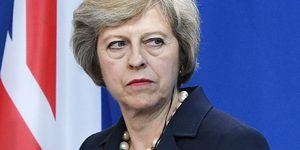My blog Mrs May – Save Us! was a critique that I wrote in January 2017 of an appeal by a group of 1000 doctors to the UK Prime Minister and Health Secretary to publish a new Tobacco Control Plan: https://www.nicotinemonkey.com/mrs-may-save-us/
The government did so, in rather a hurry it seems, in July 2017. The details are set out in a paper called Towards a Smokefree Generation. It’s self-congratulatory, repetitive, contradictory and, alas, contains nothing new.
Let’s start with the Foreword by one Steve Brine, Parliamentary Under Secretary of State for Public Health and Primary Care.
He proudly notes:
Since the previous Tobacco Control Plan, smoking prevalence has substantially reduced; from 20.2% of adults smoking at the start of the plan to just 15.5% now, the lowest level since records began.
And then he goes on to boast of ‘world leading public health measures’ and that ‘The UK now has comprehensive tobacco control legislation which is the envy of the world.’
Set against this, however, are some dismal figures:
Over 200 deaths every day are still caused by smoking…8% of 15 year olds…[and] 10% of pregnant women still smoke.
To deal with this dreadful situation, Stevie boldly declares:
Our vision is nothing less than to create a smokefree generation. To do this we need to shift emphasis from action at the national level – legislation and mandation of services to focused, local action, supporting smokers…to quit.
In his visionary enthusiasm he’s even invented a new word, ‘mandation’. I couldn’t find it in any dictionary. Not to worry. Focused, local action to support smokers to quit is the way to go!
I like a man with self-confidence:
…the government will…ensure (sic) that the new legislation is implemented well and that organisations with national responsibilities are joined up (sic)…
Now let’s get to the contradictory bit:
Our vision is to create a smokefree generation. We will have achieved this when smoking prevalence is at 5% or below.
Surely a ‘smokefree’ generation means that nobody will smoke, but if up to 5% of the population smokes that’s hardly smoke-free.
The paper also mentions what they call National Ambitions, which include reducing the prevalence of smoking in 15 year olds from 8% to 3% or less, in adults from 15.5% to 12% or less, and in pregnant women from 10.7% to 6% or less.
It seems to me that if the notion of a ‘smokefree generation’ has any sense at all, then one of the National Ambitions should be reducing the prevalence of smoking for everyone to 0%.
The problem, however, is not with smokers who have quit or people who never start smoking; the problem is with those who don’t quit or who take up smoking ab initio.
Then the vision gets a bit cloudy. They want to:
Help people to quit smoking by permitting innovative technologies that minimise the risk of harm [and] maximise the availability of safer alternatives to smoking.
Why aim so low? If they merely minimise the risk of harm there is still a risk of harm. Why should anyone need ‘safer alternatives to smoking’ when there is a completely safe alternative, namely, not using any tobacco products at all?
As for the laudable aim of getting pregnant women to stop smoking, ‘These [measures] include regularly using Carbon Monoxide (CO) monitors to assess whether [pregnant] women are smoking…’ In other words, they don’t trust them. And these women, unless they opt out, will automatically be referred to stop smoking services through the ingeniously named Saving Babies’ Lives Care Bundle (sic).
They really are stuck in discouraging mode:
Tobacco dependence is one of the hardest addictions to break. A smoker will typically have many failed quit attempts before they manage to successfully quit smoking.
Wrong on both counts. If you go about it in the right way it’s easy to stop smoking without using any nicotine products. And the concept of a quit attempt is meaningless – see https://www.nicotinemonkey.com/how-many-attempts-do-smokers-need-before-they-quit/
As for stop smoking services, ‘Smokers who use them are up to four times as likely to quit successfully as those who choose to quit without help…’ This is misleading because the actual success rate is 20% at best – or an 80% failure rate.
Then, in spite of acknowledging that:
Tobacco is the deadliest commercially available product in England…[and] there is a fundamental and irreconcilable conflict between public health and the interests of the tobacco industry
all that our Steve can offer is a platitude:
The best thing a smoker can do for their health is to quit smoking
It’s clear the government doesn’t really know what to do:
We welcome innovation that will reduce the harms caused by smoking…The government will…continue to evaluate critically the evidence on nicotine delivery products, providing clear communication about what is known and unknown about the short and long term risks of using different products relative to smoking and the absolute risk to children, non-smokers and bystanders.
Perhaps Mr Brine and his colleagues at the Department of Health would allow me to make a suggestion that would, if implemented, solve the smoking problem once and for all.
It should be an explicit government policy to get rid of ‘the deadliest commercially available product in England’ by enacting legislation to phase out and abolish within, say, five years, the manufacture and sale of cigarettes and all other tobacco products.
Text © Gabriel Symonds


Leave A Comment